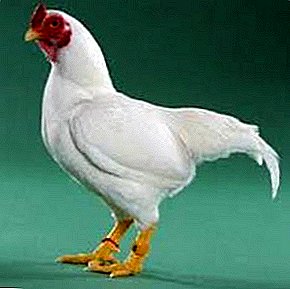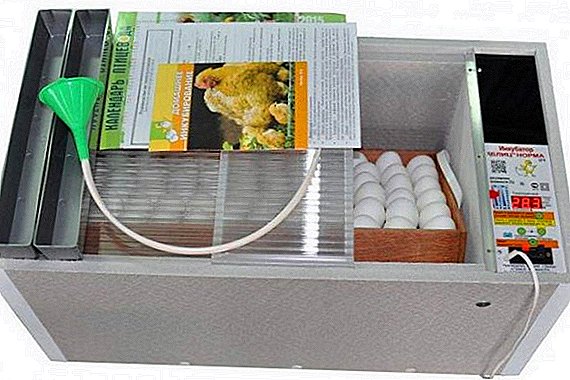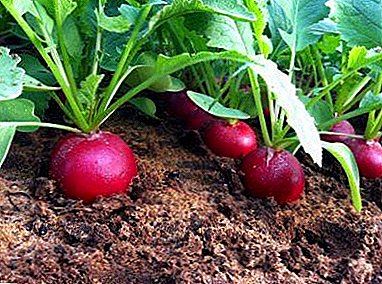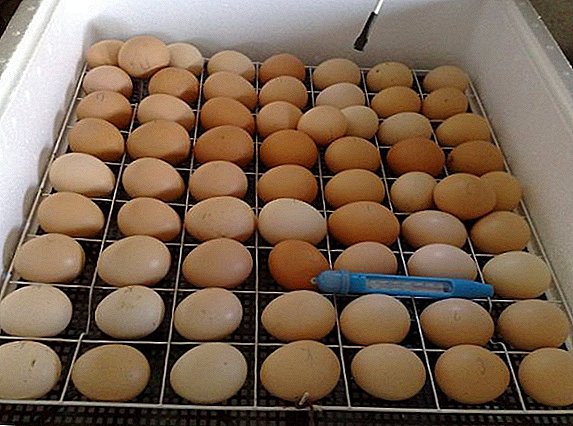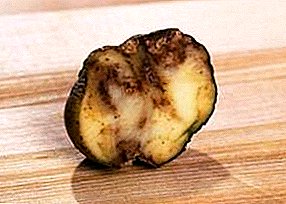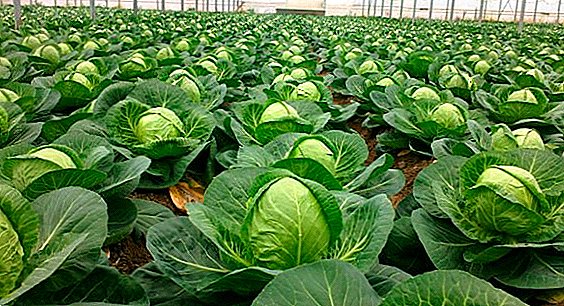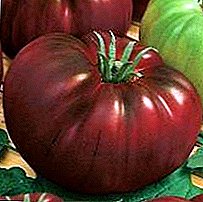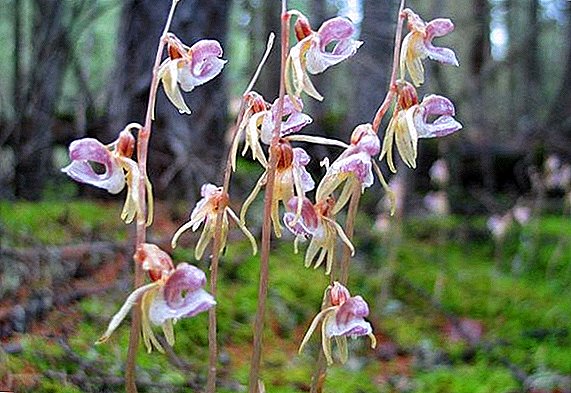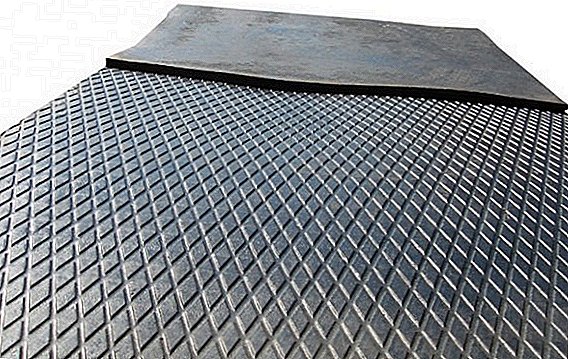 From the quality of the floor in the barn depends largely on the health and productivity of its inhabitants. For cattle it is very important that the floor is always dry and warm, elastic and at the same time durable, does not accumulate the pathogenic microflora and does not contain toxic chemicals, and for the farmer, moreover, that the coating is affordable and while durable. Natural materials have long been used as bedding, but modern technologies offer new options - multi-layer mattresses, which are also called livestock mats, rugs or plates.
From the quality of the floor in the barn depends largely on the health and productivity of its inhabitants. For cattle it is very important that the floor is always dry and warm, elastic and at the same time durable, does not accumulate the pathogenic microflora and does not contain toxic chemicals, and for the farmer, moreover, that the coating is affordable and while durable. Natural materials have long been used as bedding, but modern technologies offer new options - multi-layer mattresses, which are also called livestock mats, rugs or plates.
What is bedding in the barn for?
The main purpose of bedding in a cowshed for cows is sanitary and hygienic. Manure, urine, food residues and other waste products of cattle are an excellent breeding ground for pathogens that cause various infectious diseases in animals.  In this way, the litter allows for dryness, warmth and cleanliness in the stable. In addition, the soft material makes the rest of the cow much more comfortable, and therefore increases its productivity.
In this way, the litter allows for dryness, warmth and cleanliness in the stable. In addition, the soft material makes the rest of the cow much more comfortable, and therefore increases its productivity.
Important! It has long been proven that the main cause of mastitis, which, according to various sources, affects from 20 to 80% of dairy cows, is their content on the wet and dirty floor, devoid of bedding.
However, not all so simple. Organic materials used as litter are themselves a source of bacteria. Especially quickly they multiply in the thickness of the straw, which, moreover, may contain impurities of poisonous and weeds, as well as mold fungi.
As the litter becomes contaminated, the situation worsens, so this material needs to be either changed very often or special powders that prevent the development of pathogenic microflora be added to it - and this entails additional costs for the farmer.
From this point of view, non-replaceable bedding made of inorganic materials look much more attractive.
What is animal mats?
Livestock mats, rugs or plates - this is a modern type of flooring for livestock buildings; They are made of non-toxic polymeric materials.  Such products are suitable for stalls, milking parlors, manure channels, walkways and girders in the barns and can be used with loose and tethered animals.
Such products are suitable for stalls, milking parlors, manure channels, walkways and girders in the barns and can be used with loose and tethered animals.
Did you know? A cow needs to lie down for at least 12 hours a day. This allows the hooves to get a good rest and completely dry out. According to statistics, hoof diseases occupy the third place among the variety of diseases that await a cow during her life, and these problems arise because of too long an animal stays upright. In addition, the lack of necessary rest also leads to a significant reduction in yields.
A feature of agricultural rugs is the presence of a corrugated surface, which excludes sliding and, accordingly, traumatizing cattle. In this case, the lower side of the mat is supplied with special spikes, providing excellent cushioning, protecting the hooves and joints of the cow from excessive load.
What are
For the time being, domestic farmers are only looking at a fundamentally new type of coating in livestock buildings, while abroad this technology has long become popular and widely used.
Therefore, on the market today you can find a huge selection of various agricultural mats, differing not only in size and material production, but also many other technical characteristics.  The choice of a particular product depends on the size of the farm, the financial capacity of the farmer, his personal preferences and the conditions in which the animals are kept.
The choice of a particular product depends on the size of the farm, the financial capacity of the farmer, his personal preferences and the conditions in which the animals are kept.
Find out also how to build a barn for cows with your own hands and how to make ventilation in it.
Polymer materials
Such mats are made from a composite polymer, for example, ethylene vinyl acetate (EVA).
Polymer mat has a thickness of from 10 to 40 mm and consists of two layers:
- External, made of polypropylene, is designed to protect the mat from damage by cattle hooves, prevent slipping, and prevent moisture from entering the product.
- Internal, which can be made of polyurethane (foam) or any other porous filler, which can be used as rubber chips, fine sand, sawdust, etc. The main task of this layer is to provide softness and elasticity (springiness), as well as protection of the product from caking and deformation. Sometimes the inner layer is additionally wrapped with polyethylene to completely eliminate getting wet, however, the cost of such a plate is slightly higher.
Manufacturers produce such mats in different sizes and colors, which allows each owner to choose for themselves the best version of the product. 
Rubber
Rubber mats in the domestic market are much more common - they are inferior in quality polymer, however, are cheaper. Such rugs are monolithic, and therefore do not provide good shock absorption.
In addition, they have a higher thermal conductivity, and therefore, much worse than polymer products, protect livestock from the cold.
Important! For comparison: the coefficient of thermal conductivity of rubber is 0.15 W (m * K), while the corresponding figure for polyurethane and foam varies within 0.03-0.05 W (m * K), that is 3-5 times lower.
Accordingly, the rubber mat does not solve the problem of warming and is much more rigid, so you still need to line a layer of straw or sawdust over such mats.
Nevertheless, livestock slabs of rubber have the following advantages:
- few are subject to deformation;
- can serve for several years, quickly having paid back to the farmer the funds spent on their acquisition;
- waterproof;
- ecologically safe (for their manufacture uses a special high-tech material);
- have a corrugated surface, eliminating slip and injury.
 Like polymer plates, rubber products are sold in various sizes, the most running are considered to be 160x90 and 180x120 cm. Each such plate weighs from 15 to 25 kg. On each carpet there are several fastening holes, allowing you to quickly fix the product on the floor of the barn with screws or dowels.
Like polymer plates, rubber products are sold in various sizes, the most running are considered to be 160x90 and 180x120 cm. Each such plate weighs from 15 to 25 kg. On each carpet there are several fastening holes, allowing you to quickly fix the product on the floor of the barn with screws or dowels.A special tape is applied to the joints of the floor-covering mats, which prevents liquid, manure and dirt from penetrating under the mat. More expensive products have hidden fastenings and are superimposed in such a way that the joints between them are almost invisible.
Benefits of using
Modern livestock mats made of inorganic materials (polymers to a greater extent, rubber to a lesser extent) have many advantages over organic matter that is familiar to domestic farmers.
In particular, these benefits include:
- ecological safety and hypoallergenicity (unlike straw, which may contain plants that have undergone chemical treatment, as well as stones and other hard objects that can injure a cow). This feature is also important for improving the quality of milk by eliminating the ingress of harmful chemicals into it;
- softness, resilience and elasticity, the ability to repeat the anatomical bends of the animal's body, not sticking to it, which provides a complete rest and sensations, as close as possible to the natural (soft meadow grass);
- good shock absorptionminimizing stress on the joints and limbs of cattle;
- lack of favorable environment for the reproduction of pathogenic bacteria, attracting flies and gadflies;
- water tightness, cleanliness and hygiene: polymeric materials exclude the reproduction of pathogenic microflora, and modern methods of fastening and waterproofing do not allow liquids to penetrate under the coating. Moreover, if such penetration does occur, technological spikes ensure quick drying of the coating under the mat and prevent the development of fungal infections and putrefactive processes there;
- easy cleaning - no need to change and dispose of contaminated organic litter; livestock mat simply enough to clean up the accumulated dirt;
- no need to manufacture, purchase, transport and store large stocks of straw, sawdust, sand and other types of replaceable organic litter;
- corrugated surface prevents injuries;
- no risk of failure of manure pumps due to the ingress of sand or hard foreign objects from the organic litter;
- good heat preservation even in poorly heated premises, there is no risk of freezing in winter (as opposed to straw, sand and sawdust);
- durability, strength, resistance to deformation and wear for several years (polymer mats serve up to 10 years);
- quick payback - both by saving costs for the purchase of replaceable litter, and by increasing the productivity of cattle.
 Summing up, it is safe to say that high-tech livestock mats made of safe materials have a future, while straw and other organic litter options are yesterday.
Summing up, it is safe to say that high-tech livestock mats made of safe materials have a future, while straw and other organic litter options are yesterday.Did you know? The total weight of all the cows on the planet (males and females) is three times the weight of all people.
Additional costs associated with the acquisition of such coverage are justified, since they provide cows with more comfortable conditions of housing. This results in a significant increase in productivity, as well as a decrease in the level of injuries and the spread of infectious diseases.


